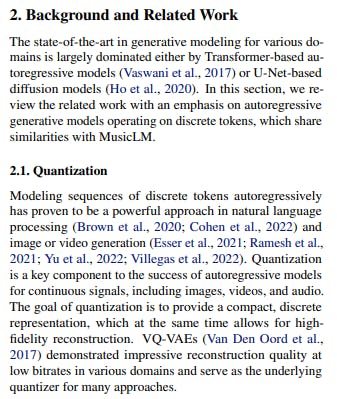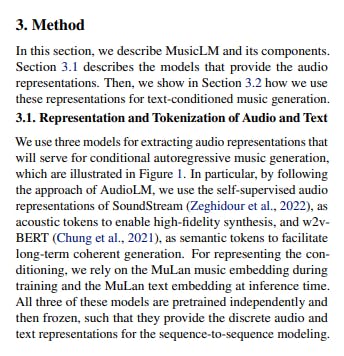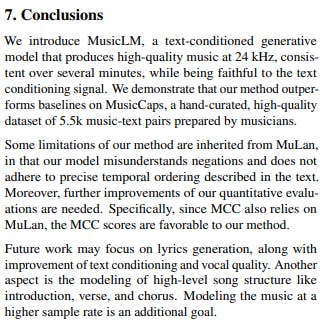Hey there! Welcome to your first step into the fascinating world of research papers. If you're like many out there, the mere thought of diving into a research paper might feel a bit like trying to decipher an ancient, cryptic manuscript. You're not alone in this journey, and I'm here to guide you through it.
Understanding research papers is a crucial skill, especially in our ever-evolving technological landscape. These documents are treasure troves of cutting-edge insights, groundbreaking discoveries, and in-depth knowledge on virtually every topic under the sun.
But why should you, as a beginner, care about them? Well, research papers are not just for academics or scientists. In the tech world, they are often the first place where innovations, algorithms, and tech trends are introduced. From understanding the latest developments in artificial intelligence to exploring new programming techniques, research papers can be your window into the future of technology.

Research papers serve as the backbone of academic and scientific communication, aiming to advance knowledge in a specific field. They are important because they provide detailed and rigorous analysis of new findings, theories, or evaluations of existing work. Research papers convey in-depth information, backed by data and references, offering a platform for scholars and professionals to share their discoveries, challenge existing norms, and contribute to the collective understanding of a subject. Through these papers, complex ideas and groundbreaking innovations are disseminated, fostering further research and development. They are essential for driving progress, informing practices, and enhancing our comprehension of various phenomena.
Now, I know what you're thinking. "These papers are so dense, filled with jargon, and just plain intimidating!" And you're right; they can be. But that's where this guide comes in. I've been where you are now, and I've learned the ropes (sometimes the hard way). So, I've crafted this guide to simplify things, break down the barriers, and make research papers more approachable and less daunting for you.
So, Let's dive in! 🚀📚

Sections of a Research Paper
Diving into the world of research papers can be overwhelming, but understanding their structure is like getting a roadmap to a treasure. Let's explore this using the "MusicLM" paper as our guide.
Abstract

What It Is: The abstract is a succinct summary of the entire paper.
In "MusicLM": It introduces MusicLM, its approach to generating high-quality music from text, and the novel dataset 'MusicCaps'.
Simplified: Think of it as the movie trailer of the paper, giving you a sneak peek of the entire story in a few lines.
Introduction

What It Is: This section sets the stage, explaining the paper's goals, background, and significance.
In "MusicLM": It talks about challenges in neural audio generation and introduces MusicLM in the context of these challenges.
Simplified: It's like the opening scene of a movie, introducing the main characters (MusicLM) and the setting (audio generation world).
Background

What It Is: The background provides context, historical perspectives, and the foundational work that the research is built upon.
In "MusicLM": This section delves into previous approaches in text-to-music generation and the limitations of existing technologies, setting the stage for why MusicLM's approach is innovative.
Simplified: Imagine understanding the history of music before a new genre emerges. This section is like a history lesson, explaining what has been done before in the field and what challenges exist, making it clear why the new research (like MusicLM) is needed and exciting.
Methodology

What It Is: The 'how-to' part of the paper, detailing the methods and processes used.
In "MusicLM": It explains the technical workings of MusicLM, including representation, tokenization of audio and text, and hierarchical modeling.
Simplified: Imagine someone explaining how to bake a cake, detailing every step and ingredient.
Results


What It Is: This section presents the findings and outcomes of the research.
In "MusicLM": It showcases how MusicLM performs against other models and discusses its effectiveness.
Simplified: Like showing you the baked cake and telling you how tasty it is compared to others.
Discussion
What It Is: The part where researchers interpret their results and discuss their significance.
In "MusicLM": It reviews the key findings and their implications in text-to-music generation.
Simplified: Discussing why the cake tastes good and why its recipe is special.
Conclusion

What It Is: A wrap-up of the paper, summarizing findings and hinting at future research.
In "MusicLM": Concludes the effectiveness of MusicLM and suggests future improvements.
Simplified: Like ending the movie with a summary and hints about a possible sequel.
Each part of a research paper plays a vital role in conveying complex information. By breaking down these sections, we can better understand and appreciate the rich content and insights they offer.
Reading Strategies

Navigating through a research paper can be daunting, but with the right reading strategies, it becomes a manageable and even enjoyable endeavor. Here are some tips and techniques to effectively read and understand research papers:
Skimming for Structure: Start by skimming the paper to understand its structure. Look at headings, subheadings, figures, and tables. This gives you a bird's-eye view of the content and helps you decide which parts need more focus.
Focused Reading: Once you've skimmed the paper, dive into sections that are most relevant to your interest or research. Pay close attention to the introduction and conclusion, as they often contain the crux of the research.
Questioning the Content: Approach the paper with a critical mind. Ask yourself questions about the research methodology, the data presented, and the conclusions drawn. This critical analysis is crucial for a deeper understanding.
Look up Unknown Terms: Don't shy away from looking up terms or concepts you're unfamiliar with. Understanding these is essential to grasp the full meaning of the paper.
Analyzing the Content

Critical analysis of a research paper involves a deeper dive into its core components: methodology, data, and conclusions. Here's how to approach each:
Methodology Analysis: Examine the research methods used. Are they appropriate for the study's goals? Consider if the approach is innovative, thorough, and ethical. In the case of "MusicLM," assess how the model's design and implementation contribute to its goal of generating music from text.
Data Evaluation: Look at the data presented. Is it sufficient, relevant, and well-analyzed? Evaluate the quality and source of the data, and whether the analysis supports the claims made. For "MusicLM," consider how the data on music generation is collected, processed, and interpreted.
Conclusions Scrutiny: Finally, scrutinize the conclusions drawn. Do they logically follow from the data and analysis? Are they overreaching, or do they present a balanced view? With "MusicLM," assess if the conclusions about the model's effectiveness in text-to-music generation are well-supported by the results.
Common Challenges and Solutions
Beginners often encounter several challenges when approaching research papers. Here's how to tackle some common ones:
Overwhelmed by Complexity: Research papers can be dense and packed with jargon. Solution: Start by reading the abstract, introduction, and conclusion to get a general overview. Use glossaries or online resources to understand complex terms.
Trouble with Structure Recognition: Understanding how a paper is organized can be confusing. Solution: Familiarize yourself with the typical structure (abstract, introduction, methodology, etc.) and use it as a guide to navigate the paper.
Difficulty in Critical Analysis: Assessing the validity and significance of the research is challenging. Solution: Learn the basics of research methodology to better evaluate the strength of the paper's arguments and conclusions.
Integrating Information: It's hard to see how a paper's findings apply to broader contexts. Solution: Relate the paper's conclusions to current knowledge in the field, and consider how it could impact future research or real-world applications.
Additional Resources:
Some tools that you can find useful while understanding a research paper:
Consensus: An AI-powered search engine that takes natural language questions and finds evidence-based answers from peer-reviewed research papers. It's ideal for accessing information across a vast array of academic papers and provides instant summaries and analyses.
Scite: This tool offers a unique feature called Smart Citation, which helps you see how an article has been cited and whether the citing articles affirm or dispute the citation. It's a great way to understand the impact and reception of previous research.
SciSpace: Simplifies complex concepts and helps in summarizing large scientific papers. It's especially useful when you need quick insights from a lengthy paper or have trouble understanding a specific section.
Research Rabbit: Acts like a 'Spotify for Papers', offering paper recommendations and creating visualizations of how your chosen articles are cited, opening new research angles.
AI-Powered Collaboration Platforms like ChatGPT and SciSpace: These platforms facilitate collaboration among researchers, allowing idea exchange and feedback, enhancing the quality of research.
Conclusion
In wrapping up, this guide aimed to demystify research papers, making them more accessible to beginners. We've explored their structure, delved into effective reading strategies, learned how to analyze content critically, and addressed common challenges. Remember, understanding research papers is a skill that develops over time. Start small, be patient, and gradually, you'll find yourself navigating these academic waters with increasing confidence and curiosity. So, embark on your journey with an open mind and enthusiasm. Happy reading and discovering! 🚀📚
